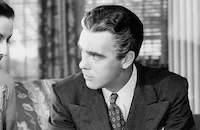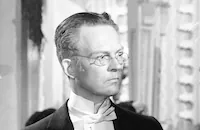At Pearl Harbor, Ensign Willie Keith (Robert Francis) is assigned to the destroyer Caine, which is under the command of Captain DeVriess (Tom Tully). The less than presentable appearance of the ship is soon addressed by a change in command and Lieutenant Commander Philip Francis Queeg (Humphrey Bogart) is brought in as DeVriess's replacement. At first, Queeg's command appears to be an improvement, instigating a spit-and-polish approach to the ship's upkeep. But soon Queeg begins to behave erratically; he displays cowardice during a beachhead landing and drastically overreacts to the discovery that some strawberries are missing from the icebox. As his mental condition worsens, some crewmembers - Ensign Keith, Lieutenant Maryk (Van Johnson), and Lieutenant Keefer (Fred MacMurray) - become increasingly concerned and are eventually forced to challenge his command during a typhoon when the ship appears to be in danger of sinking. The result of their actions is a court-martial trial which pits the mutinous officers against Queeg.
Producer: Stanley Kramer
Director: Edward Dmytryk
Screenplay: Herman Wouk (novel), Stanley Roberts, Michael Blankfort (additional dialogue)
Production Design: Rudolph Sternad
Cinematography: Frank Planer
Costume Design: Jean Louis (gowns)
Film Editing: Henry Batista, William A. Lyon
Original Music: Max Steiner
Principal Cast: Humphrey Bogart (Lieutenant Commander Philip Francis Queeg), Jose Ferrer (Lieutenant Barney Greenwald), Van Johnson (Lieutenant Steve Maryk), Fred MacMurray (Lieutenant Tom Keefer), Robert Francis (Ensign Willie Keith).
C-125m. Letterboxed. Closed captioning.
By Jeff Stafford
THE LONG VIEW
The Caine Mutiny (1954), based on the best-selling novel by Herman Wouk, was the first commercially successful collaboration between producer Stanley Kramer and director Edward Dmytryk, a former victim of the anti-communist blacklist and one of the original 'Hollywood Ten.' While their previous films together - The Sniper (1952), Eight Iron Men (1952), and The Juggler (1953) - were well received by critics, it wasn't until they made The Caine Mutiny that they produced a box-office hit (It was the fourth highest grossing film of 1954). Yet, it almost didn't get made.
For one thing, the Navy Department initially objected to the making of the film and without their cooperation, the project was doomed. However, Kramer and the head of Columbia Pictures - Harry Cohn - eventually won the Navy Department's approval and permission to use some of their ships and locations by offering them a number of concessions to the script: the enlisted men would not be presented as unintelligent, unkempt, or as scurvy misfits; Captain Queeg's cowardice would be minimized and his character made more sympathetic; the film would open with a disclaimer that read, "There has never been a mutiny in the United States Navy. The truth of this story lies not in its incidents but in the way a few men meet the crisis of their lives." The Navy also wanted the word mutiny dropped from the title but, luckily, Kramer prevailed against this request as so many people were already familiar with the Wouk novel.
In addition to the Navy's demands, Harry Cohn made some of his own stipulations; a romantic subplot needed to be added involving Ensign Keith and his girlfriend, May Wynn, that wasn't in the novel and the film would have a strict budget of two million dollars. Edward Dmytryk later said, "One penny beyond that, or a minute beyond two hours' length and Columbia had the right to take over the film for editing."
The author of the novel, Herman Wouk, wrote the first screenplay treatment but it ran nearly 500 pages long which would have translated into a 15 hour film. It was also a departure from the original story since Wouk wanted to do something new with the material. So Stanley Roberts was brought in for a rewrite but he left after refusing to add Cohn's requested romantic subplot, leaving Michael Blankfort to complete the job. As for the cast, Humphrey Bogart was always Kramer's first choice to play Captain Queeg, even though Dick Powell campaigned heavily for the role. When Bogart was later asked how he managed to be so convincing as a paranoid personality, he replied, 'Simple, everybody knows I'm nuts, anyway.' In truth, it was just great acting and Bogart received his third Best Actor Oscar nomination for his performance (he lost to Marlon Brando in On the Waterfront). The Caine Mutiny also garnered Academy Award nominations for Best Picture, Best Supporting Actor (Tom Tully), Best Screenplay, Best Sound Recording, Best Film Editing, and Best Dramatic Score (by Max Steiner).
by Scott McGee

















































